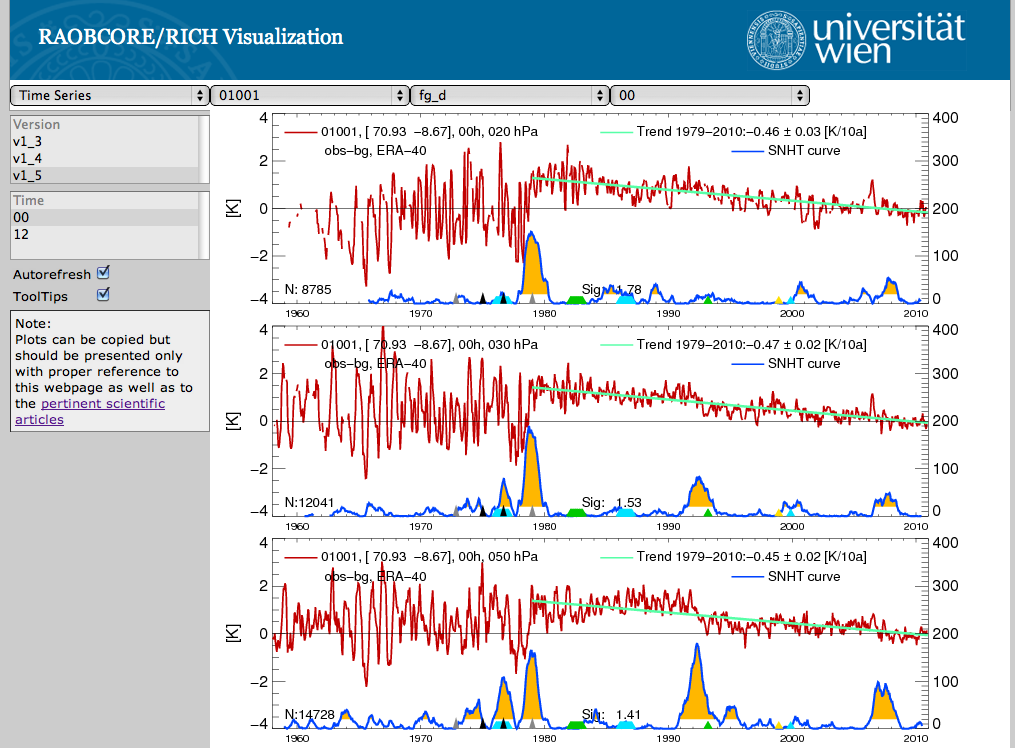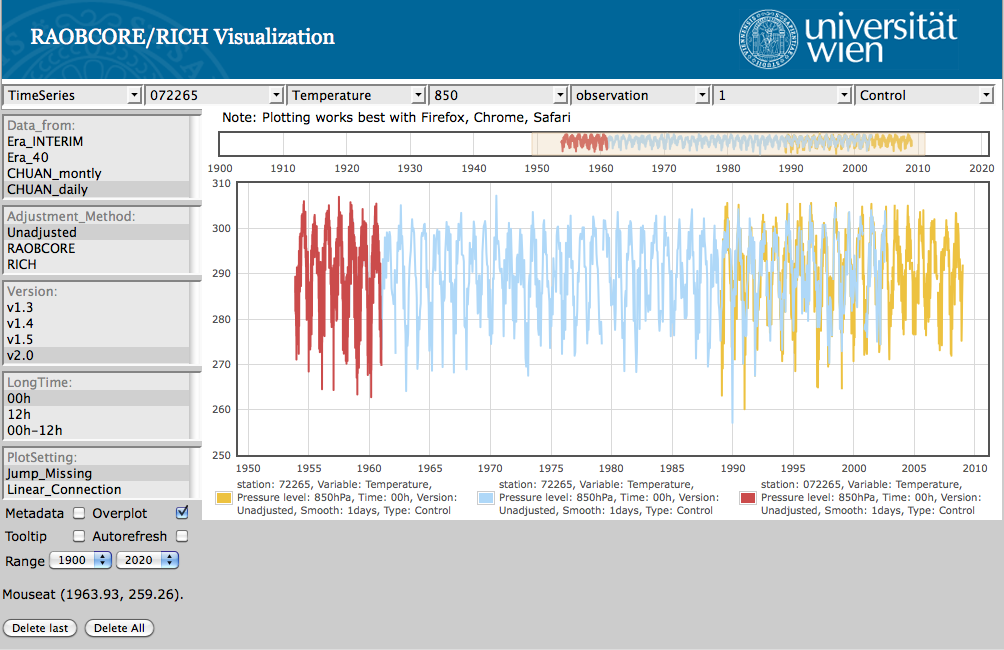Report of the 4th World Climate Research Programme International Conference on Reanalyses Discussion Page
1. Executive Summary
Reanalyses have become an integral part of Earth system science research across many disciplines. While originating in the atmospheric sciences and Numerical Weather Prediction (NWP), the essential methodology has been adopted in the fields of oceanography and terrestrial ecosystems and hydrology, with emerging research in atmospheric composition, cryosphere and carbon cycle disciplines. Major challenges lie ahead as the disparate nature of each discipline become joined in Earth system analyses. Clearly, substantial progress has been made since the last reanalysis conference (Jan 2008, Tokyo Japan). Newer atmospheric reanalyses (MERRA, CFSR and ERA-Interim) have been evaluated in depth, and many strengths and weaknesses identified. Early results from JRA-55 are becoming available. There is tremendous potential in the NOAA/ESRL 20CR surface data only reanalysis, and in the uncertainty provided from the ensemble. Ensembles of multiple reanalysis systems can provide valuable information. Although there are several reanalyses efforts worldwide at present, the community consensus is that the diversity among them will enable deeper understanding of the reanalyses systems, their strengths and weaknesses and their representation of the underlying earth system processes/phenomena. This is then reflected in the producers’ plans (notably those of JMA and ECMWF) leaning toward “families” of reanalyses (each system producing various configurations of reanalysis). There is much to be learned about the observations, data assimilation, modelling, and coupling the Earth system but new data systems, efficient computing and processing of the multitude of reanalyses products are urgently needed. The integrating nature of reanalyses across components of the Earth system (land, ocean atmosphere) is a key benefit, but to date very few reanalyses systems include all relevant data and assimilate all Earth system components. Observations are the fundamental resource for reanalysis. The need for long-term records of continuous measurements cannot be overstated. Data recovery efforts for in situ and remotely sensed observations are essential to extend the records as far back in time as possible to support long historical reanalyses, while concerted efforts to maintain and develop the observing system forward in time to ensure continuity for the future. Documenting the observations and their uses in past reanalyses can be beneficial both to use in future reanalyses and to understanding of the observations. Expertise for all the observations exists around the world, and so, international coordination of observations for reanalysis should be an imperative for international observations and research coordination programs such as GCOS, GEOSS, CEOS and WCRP. Confronting models with observations continues to be important but also confronting models (e.g. ocean and atmospheric models) and observations (e.g. discrepancies between micro-wave satellite records and radiosonde measurements) among themselves are equally important research tasks for the future. Data assimilation methods continue to improve, but have more challenges ahead, such as the amelioration of shocks associated with changes to the observing system (also better characterizing and reducing model bias) and developing uncertainty estimates for reanalyses. Reanalyses have recently been getting attention from the climate monitoring community, and so, their strengths, weaknesses and uncertainty are increasingly exposed.
Reanalysis users often ask which reanalysis is best for a given topic. As newer reanalyses come along, the answer may not be widely known, if at all. In this regard, the community of users and developers must collaborate, given the diversity of applications. The web site, reanalysis.org, has been promoted as an open media for conveying the latest understanding of reanalyses data. Additionally, NCAR’s Climate Data Guide (https://climatedataguide.ucar.edu/) is a very useful go-to source for scientifically sound information and advice on the strengths, limitations and applications of climate data, including reanalyses. While fundamental information is available primarily on atmosphere and ocean reanalyses, discussions on the latest research and understanding are progressing more slowly. Ultimately, it is incumbent on the researchers to assess the multitude of reanalyses objectively. New data systems are required that allow for more efficient cross comparisons among the various reanalyses (such as those used for AMIP and CMIP studies and the Earth System Grid, ESG). The 4th WCRP International Conference on Reanalyses produced excellent discussions across all the important issues in reanalyses, but continuing the progress and improvements will require sustained efforts over the long term. While progress has been made across the major aspects of reanalyses, significant limitations persist. The conference has identified broad directions to continue the advancement of reanalysis:
1) Quantitative Uncertainty – Reanalyses are based on observations, and can include the errors of observations and the assimilating system. It is recommended to have reanalysis data available in a common framework so as to facilitate the analysis of their strengths and weaknesses. The notion of Families of reanalyses will likewise expose the impact of assimilating observations on the analyses. Ensemble methods can also provide quantitative uncertainty estimates. Lastly, passing observations and innovations into an easily accessible data format can promote deeper investigation of the use of observations in the reanalyses.
2) Qualitative Uncertainty – Often researchers inquire to the applicability of a reanalysis for a given phenomena, or even, which reanalysis is best. Often, this is not satisfactorily known, varies with application and requires significant time and research. Therefore, sharing reanalysis knowledge and research in a timely manner, among researchers and developers is a critical need to allow subsequent exploitation by the climate community. The reanalysis.org effort has provided an initial effort along these lines, but more participation is encouraged. In addition, http://climatedataguide.ucar.edu provides informed commentary on analysis and other datasets. Likely, even more lines of communications are required.
3) Earth System Coupling – The natural course of reanalysis development is toward, longer data sets with coupled Earth system components that will ultimately contribute to improved coupled predictions. The use of more varied observations (e.g. aerosols) will reinforce the physical representation of the Earth system processes in the reanalysis systems. There is a need to develop independent and innovative modeling, coupling and data assimilation methods to represent the Earth System throughout the time span of the observational record. More interdisciplinary collaborations in the system development and observational research will begin to address this need.
4) Reanalyses, Observations and Stewardship – While the observational records have been greatly improved since the first reanalyses through research, reprocessing and homogenizations, research and improvements continue their development. Reprocessing and intercalibrations of observed records are critical to improve the quality and consistency of reanalyses. In situ and satellite data need to be found, rescued and archived into suitable formats to extend the reanalysis record back in time. Reanalysis systems for the atmosphere, ocean, cryosphere, land, and coupled earth system are needed that maximize use of the observations as far back as each instrumental record will allow. It is important for the observational data and reanalysis developers to maintain communication, so the latest data are used in reanalyses, and also that output of reanalyses may contribute to the understanding of observations. Such an endeavor should be coordinated at an international level.
Link to Full Report









Re: Atmospheric Reanalyses – Recent Progress and Prospects ...